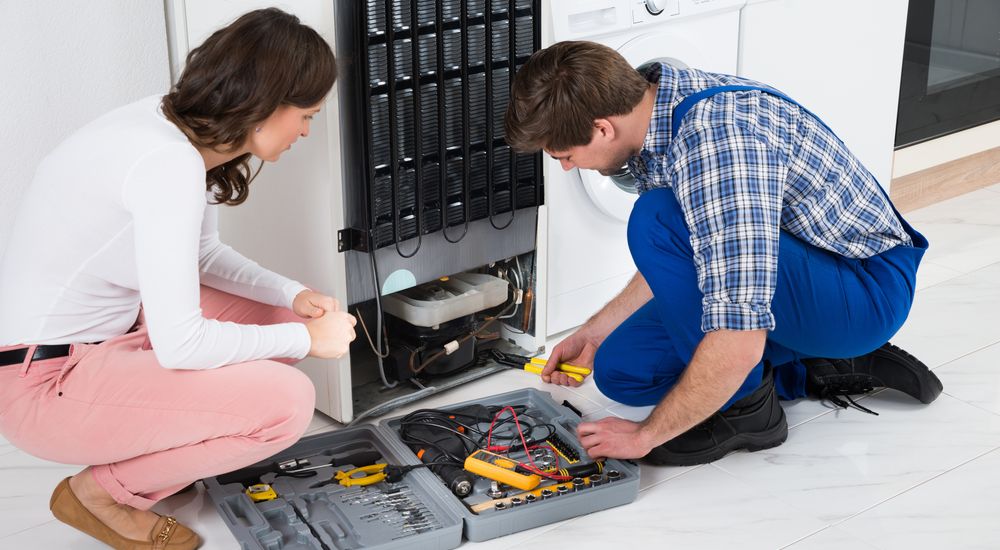You open your fridge to find a shelf full of spoiled food sitting in a room-temperature appliance. Suddenly, somehow, your temperature is boiling even hotter than this appliance.
“You had ONE job, fridge!”
Has your fridge gone haywire? Is your freezer as warm as your living room? We can help save you hundreds in spoiled groceries, and hours of headaches with a fully-warrantied, same-day appliance repair. We have prepared some troubleshooting tips for a DIY spot-treatment. Read on to learn why your fridge and freezer isn’t getting cold enough to do its job.
Remember, every appliance will have its own specific parts and troubleshooting practices – if the guidelines here don’t apply to your specific fridge or freezer, contact our appliance repair experts here to find a fast, affordable, and model-appropriate fix!
The fundamentals behind your appliances repair
Refrigerators are usually built with two main components – the frozen food section, commonly referred to as the freezer, and the fresh food section, commonly referred to as the fridge. You may notice a temperature change in one before the other, but since they’re both cooled by the same system, what affects one will affect the other.
Your fridge and freezer achieve their desired temperatures by circulating air through a cooling unit known as the evaporator. The evaporator and evaporator fan are both located in the appliance’s freezer section. The evaporator will cool and remove moisture from the air. This moisture will collect on the fins of the evaporator and turn into frost. The defrost system will periodically melt this frost, and drain the water to the exterior, where it will evaporate.
Before we start looking at the different defective part problems that could cause your fridge to remain warm, we need to determine whether the problem is with the internal air flow, or the cooling unit.
Air Restrictions
Any restriction to the air flow will create a problem. Check to make sure the evaporator fan is working properly. When the compressor is running, the evaporator fan should be, too. Turn the temperature control to the coldest setting to start the compressor – you should start to feel cold air blowing into the freezer section. Locate the air inlet to the fresh food section, and you should feel cold air blowing in there as well. If little or no airflow is present, check to make sure nothing is blocking your fan, then take a look at the electrical connections to ensure everything is in order. If you can hear the fan running, but can’t feel its effects, then look for a severe ice or frost buildup.
Excess Moisture
Any time the fridge door opens and warm air enters, you introduce more moisture into the fridge. This is exacerbated by faulty gaskets. When too much moisture is allowed inside, the defrost system may struggle to keep up, and ultimately be unable to remove frost as quickly as it builds. Ensure that your gaskets are sealing properly, and that nothing on the interior shelves is blocking the door from closing properly. Check the evaporator drain tube to ensure that it is properly intact.
Frost System Malfunctions
A malfunctioning defrost system can also be causing temperatures to rise. This will be more noticeable in the fresh food section, as a temperature rise of a few degrees may cause food to spoil.
The defrost system components consist of a heater, timer, and termination thermostat. The heater is used to heat the evaporator to melt the frost or ice buildup. The timer is used to activate the heater circuit. The termination thermostat will stop the defrost cycle when the evaporator reaches a specific temperature during the frost cycle.
Call
(619) 719-5005 to contact an appliance repair expert in San Diego right now. All appliance repairs come with a service warranty, and we can deliver same-day repairs for any make or model or refrigerator on the market!
Contact us:
(619) 719-5005
[email protected]
